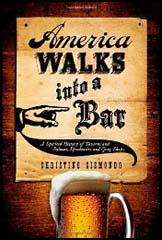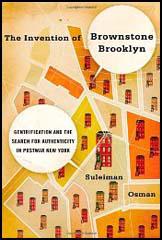Spartacus Review
Volume 56: 28th December, 2011
20th Century History

Title: America Walks into a Bar
Author: Christine Sismondo
Editor:
Publisher: Oxford University Press
Price: £15.99
Bookshop: Amazon
Spartacus Website: Prohibition
Category:
When George Washington bade farewell to his officers, he did so in New York's Fraunces Tavern. When Andrew Jackson planned his defense of New Orleans against the British in 1815, he met Jean Lafitte in a grog shop. And when John Wilkes Booth plotted with his accomplices to carry out a certain assassination, they gathered in Surratt Tavern. In America Walks into a Bar, Christine Sismondo recounts the rich and fascinating history of an institution often reviled, yet always central to American life. She traces the tavern from England to New England, showing how even the Puritans valued "a good Beere." With fast-paced narration and lively characters, she carries the story through the twentieth century and beyond, from repeated struggles over licensing and Sunday liquor sales, from the Whiskey Rebellion to the temperance movement, from attempts to ban "treating" to Prohibition and repeal. As the cockpit of organized crime, politics, and everyday social life, the bar has remained vital--and controversial--down to the present. In 2006, when the Hurricane Katrina Emergency Tax Relief Act was passed, a rider excluded bars from applying for aid or tax breaks on the grounds that they contributed nothing to the community. Sismondo proves otherwise: the bar has contributed everything to the American story. In this heady cocktail of agile prose and telling anecdotes, Sismondo offers a resounding toast to taprooms, taverns, saloons, speakeasies, and the local hangout where everybody knows your name.

Title: The Invention of Brownstone Brooklyn
Author: Suleiman Osman
Editor:
Publisher: Oxford University Press
Price: £18.99
Bookshop: Amazon
Spartacus Website: New York City
Category:
The gentrification of Brooklyn has been one of the most striking developments in recent urban history. Considered one of the city's most notorious industrial slums in the 1940s and 1950s, Brownstone Brooklyn by the 1980s had become a post-industrial landscape of hip bars, yoga studios, and beautifully renovated, wildly expensive townhouses. In The Invention of Brownstone Brooklyn, Suleiman Osman offers a groundbreaking history of this unexpected transformation. Challenging the conventional wisdom that New York City's renaissance started in the 1990s, Osman locates the origins of gentrification in Brooklyn in the cultural upheavals of the 1960s and 1970s. Gentrification began as a grassroots movement led by young and idealistic white college graduates searching for "authenticity" and life outside the burgeoning suburbs. Where postwar city leaders championed slum clearance and modern architecture, "brownstoners" (as they called themselves) fought for a new romantic urban ideal that celebrated historic buildings, industrial lofts and traditional ethnic neighborhoods as a refuge from an increasingly technocratic society. Osman examines the emergence of a "slow-growth" progressive coalition as brownstoners joined with poorer residents to battle city planners and local machine politicians. But as brownstoners migrated into poorer areas, race and class tensions emerged, and by the 1980s, as newspapers parodied yuppies and anti-gentrification activists marched through increasingly expensive neighborhoods, brownstoners debated whether their search for authenticity had been a success or failure. The Invention of Brownstone Brooklyn deftly mixes architectural, cultural and political history in this eye-opening perspective on the post-industrial city.
